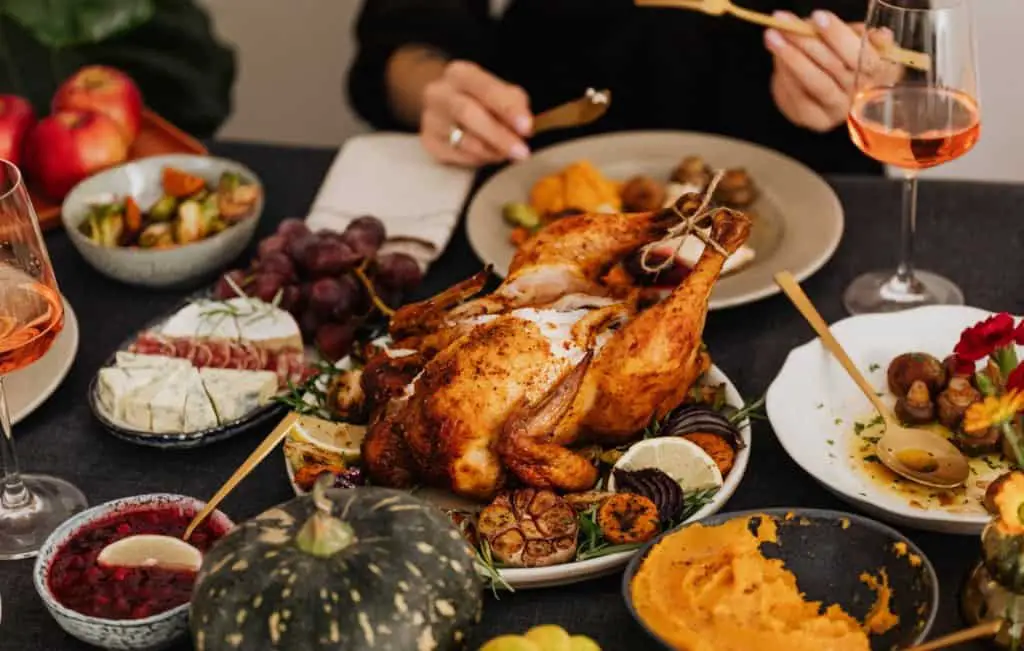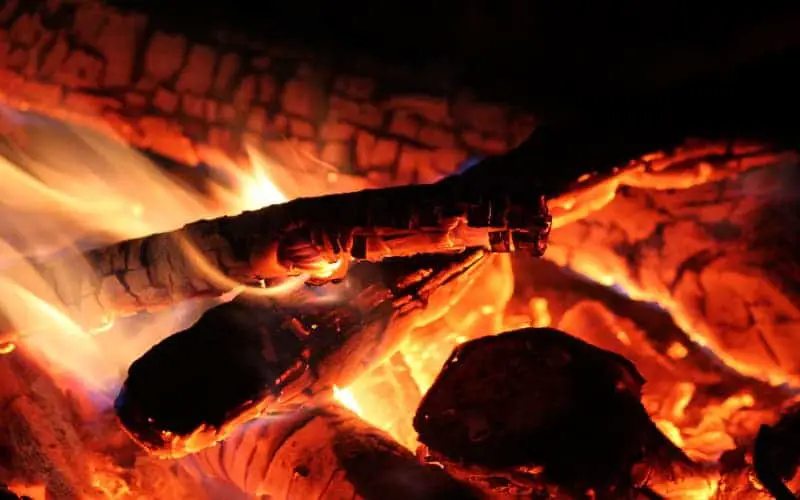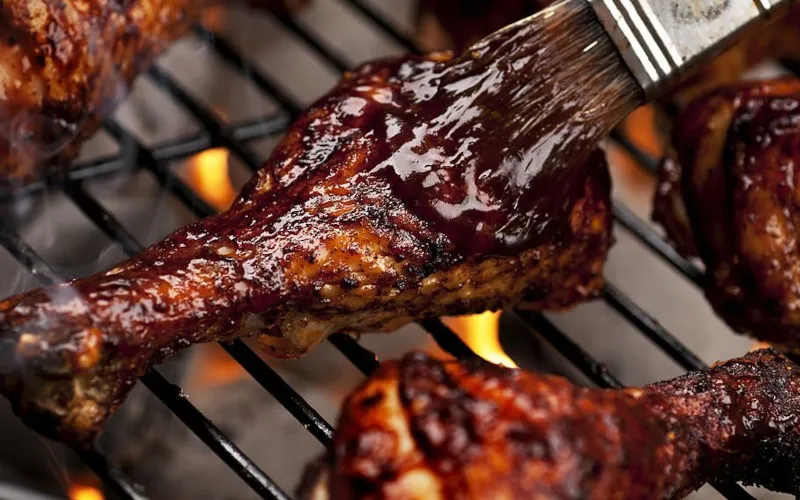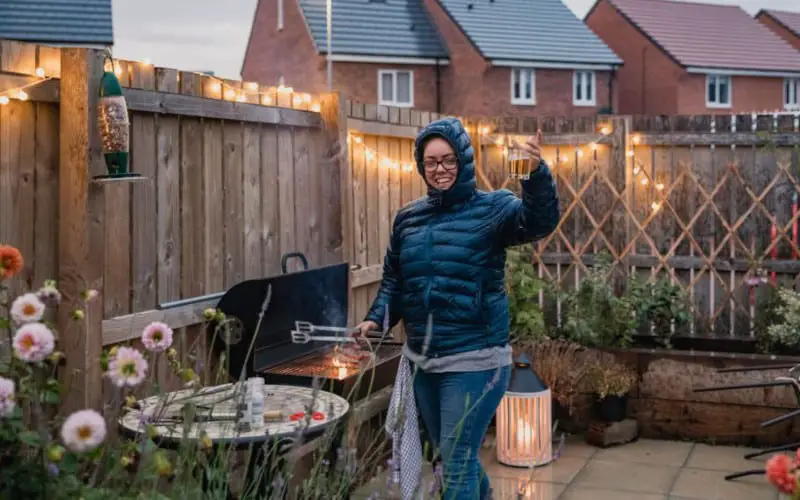One of the most delicious potential meals comes from using an offset smoker. But unless you know how to use this type of smoker, it can be pretty overwhelming. As a result, I will provide you with some information on how to smoke various meats.
Well my friends, I’m going to share my offset smoker recipes using the following types of meats:
- Turkey
- Pork Shoulder
- Prime Rib
I will also get into how to use an offset smoker generally, helping you get a good general idea of where to start.
What is an Offset Smoker
Offset smokers come in two forms, vertical and horizontal. What makes this smoker “offset” is the dual-chamber effect. The smaller chamber on the side of the smoker contains the wood chips or chunks.
The heat from this chamber in the side will naturally travel into the other chamber containing your meats. In many cases, it looks like two different drums crammed together. The heat will travel to escape towards the exhaust system coming out of the larger drum.
How to Use an Offset Smoker
You can control the level of heat inside of your smoker by looking at the amount of smoke coming out of the side. The more heat that escapes, the lower the overall temperature will be. Typically, temperatures are read with a dial along the front.
Also, people typically combine charcoal with larger wood chunks.
Charcoal is great for starting the fire, and wood chunks are solid for getting the flavor you want.
Once you find the temperature you want, open the vents to be about 1/3 or 1/2 open. For details, you should check the owner’s manual.
Check out this video below for more beginner-friendly details:
What Tools Do I Need for Smoking Meat
- Meat tongs
- Charcoal
- Wood chunks (to complement flavor)
- Internal meat thermometer
- Grill gloves
- Paper towels
- Meat forks
Below are specific recipes that you can use.
Best Smoked Turkey Recipe

Smoked turkey can be had at any time of year. While you may associate it with Thanksgiving or some other holiday tradition, you don’t need an excuse to make a delicious smoked turkey. Using this recipe below, you can make one yourself.
Ingredients
The first section is about the spice mix that we will be using later:
- 1 tablespoon of brown sugar
- 2 teaspoons of black pepper
- 2 teaspoons of smoked paprika
- 1 teaspoon of thyme
- 1 tablespoon of garlic powder
- 2 teaspoons of salt
The remainder of these ingredients are not to be included in the spice mix:
- 5-pound turkey
- Several chunks of hickory wood
- Charcoal
How to Smoke a Turkey in a Wood Smoker
- Mix the brown sugar, black pepper, paprika, thyme, garlic powder, and salt.
- Remove the 5-pound turkey, ensuring that it is entirely dry. If needed, you can pat it dry using paper towels.
- Preheat the smoker to 250 degrees Fahrenheit.
- Insert a meat thermometer into the whole turkey, ensuring that you can easily view the temperature from its position.
- Coat the dry chicken with the spice mix, including the inside.
- Heat until the internal temperature of the turkey is 165 degrees Fahrenheit. This should take no more than four hours.
- Remove the chicken and test the internal temperature. If needed, place the turkey back inside of the smoker for an additional half an hour.
What if the Exterior is not Crispy
Typically, if your internal temperature is good, but you are looking for crispy skin, you can place it inside of an oven preheated to 400 degrees Fahrenheit. Wait about 15 minutes until the skin reaches your desired texture.
How To Keep Turkey From Drying Out
Electric vertical smokers come with a water pan to address this. In this case, nothing is preventing you from placing a water pan inside of your smoker. This is much easier if you have a second rack.
Best Wood For Smoking Turkey
Hickory is a good all-around wood that works with smoked chicken and smoked turkey. However, you may use applewood, cherrywood, and maple wood if you have a sweeter recipe. Make your decision among these depending on what seasonings you use. In this recipe, stick with hickory.
Smoked Pulled Pork (Pork Shoulder) Recipe

When following these instructions, be sure to give yourself the entire day to cook this recipe. Given the waiting time can be up to 10 hours, expect to eat this at the end of the day. By the end of this, you should come out with a delicious result.
Ingredients
- 10-pound pork shoulder
- Olive oil
- Applewood chunks
- Aluminum foil
I also have the following suggestion for your spice mix:
- 1 tablespoon of onion powder
- 1 tablespoon of garlic powder
- 2 teaspoons of paprika
- 2 teaspoons of cayenne pepper
- 1 tablespoon of black pepper
- 2 teaspoons of salt
How to Cook Smoked Pork Shoulder
- Ensure that the surface of your pork shoulder is fairly dry. Pat it dry with paper towels if needed.
- Cover the pork shoulder’s surface using olive oil, which will act as a bonding agent for your spice mix.
- Combine the onion powder, garlic powder, paprika, cayenne pepper, black pepper, and salt.
- Cover the surface of the pork shoulder using the spice mix. Wrap it completely in aluminum foil.
- Wrap it up and place it in the fridge, waiting anywhere from 8 to 24 hours
- Remove the pork shoulder from the fridge and preheat the smoker to 225 degrees Fahrenheit.
- Place pork shoulder inside of the smoker and wait up to eight hours. Make sure that you have a water tray inside of the unit.
- Pull it out and let it rest for 20 minutes.
- Tear it apart using meat forks and serve it with barbeque sauce if desired.
Make Your Spice Mixes Ahead Of Time
While we give you a shortlist of instructions for making your own spice mixes, this does not imply that you need to mix them fresh each time. In fact, making your spice mixes ahead of time will improve the overall process, especially if you know that your family loves that spice mix.
Injecting Brine Into Pork Shoulder
While you shouldn’t make your pork’s surface wet, there is nothing that says you cannot inject brine into it. To do this, you will need a meat injector that has a brine combination similar to those I’ve suggested in other recipe guides.
Meat with an internal moistness is incredibly delicious, and you can do so by combining things like water, brown sugar, ginger, and garlic cloves to soak together and inject inside the meat.
What is the Safe Internal Temperature for Pork
The safe internal temperature for pork is around 145 degrees Fahrenheit. However, pulled pork typically comes around 180 degrees Fahrenheit, which will ensure the meat’s tenderness provided that you cook it at low and slow temperatures. This recipe already has suggestions for that.
What Is Good Wood For Smoked Pork Shoulder
Pork can taste amazing if you know about wood with sweet undertones. In this case, maple wood, pecan wood, and oak are all good options. Much like in my turkey recipe, you should also be pretty safe with hickory.
Smoked Prime Rib Recipe

Prime rib is another meat that acts as a holiday classic, but you don’t need an excuse to cook it. Instead, find a day that you can take to making prime rib, as it does take time. Also, you want to be sure you find high-quality meat.
Ingredients
- 2 tablespoons of Worcestershire sauce
- 3 teaspoons of black pepper
- 1 teaspoon of salt
- 2 teaspoons of dry mustard
- 1 tablespoon of garlic powder
- 10-pound prime rib
Instructions For How To Make Delicious Prime Rib
- Preheat your smoker to 225 degrees Fahrenheit.
- Trim your rib by removing any excess fat from it (will be detailed later).
- Combine the sauce, black pepper, salt, mustard, and garlic powder.
- Cover the entire rib with the sauce mixture listed above
- Cover the ribs with aluminum foil and place it inside of the smoker
- Wait for about six hours until the internal temperature of your rib is about 145 degrees Fahrenheit.
- Remove the rib and let it rest for about 15 minutes.
- If you wish to have a seared outer texture, you can turn up the temperature to about 400 degrees Fahrenheit and put it back in for no more than 20 minutes.
- Pay close attention during the 400-degree stage, as you do not want to exceed the internal temperature listed before.
- Remove it and let it rest for another 15 minutes.
How to Choose a Good Prime Rib
Contrary to what you may believe of “lean meats,” you need to look for rib for a good deal of fat about it. Ensure that it is even with the amount of meat available on it, indicating you had a well-fed animal.
Also, you want it to be a nice red texture. If the meat looks grey, that means it is about to go (or has already gone). If a butcher has an abnormally large amount of grey meat, you may want another local option.
If you go off USDA ratings, try and look for those in the “A” area.
If the butcher isn’t aware of what grade their meat is, they may lack the knowledge you need to select a good rib.
Ribs are best served when they are done in bulk, so try and get a big roast. Ensure that you find out how much space your smoker will allow for. For vertical smokers, you may have multiple cuts of the same prime rib, so be sure to ask your butcher to do it for you if you can.
How to Trim a Prime Rib Roast
If you need to trim the prime rib yourself, the same idea applies to trimming any brisket. The ultimate goal is to ensure that you have little fat on the surface of it. Nobody likes a big mouthful of fat when they are looking for meat.
Also, you want to be sure that the meat is fairly uniform. While you are going for a “square shape” with brisket, prime rib needs to avoid any pieces hanging off.
FAQs
Why You Should Rest Meat After Cooking?
In any good meat recipe, they always reference a period of time for resting. That’s because your meat isn’t flavourful if the juices inside aren’t given time to settle. When the heat is on, the juices are bubbling all over the place, not given time to rest inside the meat.
This waiting time allows you to have perfect smoked brisket, pork butt, or smoked chicken. “The law of resting” will apply to any meat, regardless of how you cook it.
Direct vs. Indirect Heat: What is the Difference?
Offset smokers are great as indirect heat cookers, while grills are great in the other situation. The difference is that the meat is cooked directly from the heat source, such as charcoal, gas, or wood, while smoking has a separate cooking chamber.
An oven or grill will always have the same cooking chamber as where the heat source is.
Can You Smoke On A Grill?
Gas grills are not a good substitute for smokers. However, charcoal grills are somewhat effective at being a decent smoker. Just be aware that the limited space in your cooking chamber will prevent you from cooking in larger batches.
Final Thoughts
Offset smokers are wonderful devices that you can use to feed an entire family and then some. With indirect heat measures and separate cooking chambers, you can easily throw together a delicious meal.
Using the recipes listed in this guide, you will be able to cook your first couple of delicious meats. Once you get the hang of it, don’t be afraid to try and experiment every once in a while. Anything from chicken wings to smoked ham can be part of this process of smoking meat.
If you need help deciding upon a good smoker for you, check out my additional guides on the best offset smokers.





